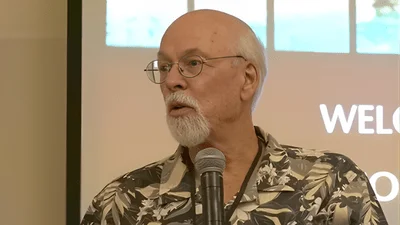On May 22, the NM Legislative Finance Committee (LFC) released a report on the state’s homeless and the affordable housing shortage which included the preliminary estimates of the 2023 Point In Time (PIT) annual homeless count. The “Point in Time” (PIT) survey is conducted once a year to determine how many people experience homelessness on a given night in communities across New Mexico. The PIT count is the official number of homeless reported by communities to the federal Department of Housing and Urban Development (HUD).
According to the LFC Report on Homelessness and Affordable Housing, New Mexico’s homeless numbers increased 48% in 2023 going from upwards of 2,600 people to 3,842. The increase was driven by an increase in the unsheltered count with 780 more people in Albuquerque and 232 more in the rest of the state. About half the emergency shelter beds available were used indicating overall adequate bed numbers statewide. However, shelter accessibility was reported as significantly lowering utilization rates because some individual emergency shelters are full while others are extremely hard to reach.
LFC points to 7 risk factors for homelessness and housing insecurity as being poverty, unemployment, involvement criminal justice system, substance abuse, mental illness, lower physical health and educational achievement. People experiencing unsheltered homelessness are more likely to exhibit multiple risk factors. These individuals tend to have higher service needs, tend to be more frequent users of community services, such as emergency room visits and inpatient and outpatient treatments, and require more acute care.
The LFC report found the state lacks enough transitional and permanent housing to help people exit homelessness and found the need for an estimated 859 additional housing units for the state’s homeless population. The estimated cost would be $11.4 million annually. According to the LFC report, the state stands to lose an estimated 5% of its roughly 29,000 publicly assisted rental units over the next five years due to expiring affordability commitments or deterioration.
In 2023, the cost to New Mexico taxpayers, based on an estimated population of 3,842 individuals experiencing homelessness is $98.5 million to $192 million. A 2022 NM Housing Strategy report found a need for 6,500 to 8,400 housing units for populations, including the chronically homeless, people on the state’s developmental disabilities list and people exiting prison or mental health institutions.
PIT data breakdown for the unsheltered for the years 2009 to 2022 reports 46% of the unsheltered suffer from serious mental illness and that 44% of the unsheltered suffer from substance abuse for a staggering 89% combined total. In Albuquerque, 30.19% of the homeless self-report as having a serious mental illness and 25.5% self-report as substance abusers for a 55.69% combined total.
Getting mental health treatment and drug counseling to the homeless is just as critical as temporary shelter, transitional housing and permanent and affordable housing. Much more can and must be done with the initiation of civil commitment hearings to deal with the homeless who are mentally ill or who suffer from drug addictions who are a serious danger to themselves and to others to ensure that they get the medical and mental health treatment services they desperately need.
There is a critical need for a civil mental health and drug commitment court for the homeless suffering from mental illness and/or drug addiction and who pose a threat to themselves, their family or to the general public. Such courts do in fact exist in the other parts of the country and have proven to be highly successful. Governor Michelle Lujan Grisham and the legislature should seek to create a specialty “Behavioral Health Treatment Court” functioning as outreach and treatment court for the drug addicted and the mentally ill in a hospital or counseling setting and not involving jail incarceration.
There is an even bigger need for the construction and staffing of a mental health facility or hospital to provide the services. As it stands now, there exists less than adequate facilities where patients can be referred to for civil mental health commitments and treatment. There is glaring and absolute need for a behavioral health hospital and drug rehabilitation treatment facility.
New Mexico is currently experiencing historical surplus revenues and this past legislative session the legislature had an astonishing $3.6 Billion in surplus revenue. It likely the state will continue to see historic surpluses. Now is the time to create a “Behavioral Health Treatment Court” and dedicate funding for the construction of behavioral health hospital and drug rehabilitation treatment facility the courts can rely upon for referrals.
Pete Dinelli is a native of Albuquerque. He is a licensed New Mexico attorney with 27 years of municipal and state government service including as an assistant attorney general, assistant district attorney prosecuting violent crimes, city of Albuquerque deputy city attorney and chief public safety officer, Albuquerque city councilor, and several years in private practice. Dinelli publishes a blog covering politics in New Mexico: www.PeteDinelli.com.




